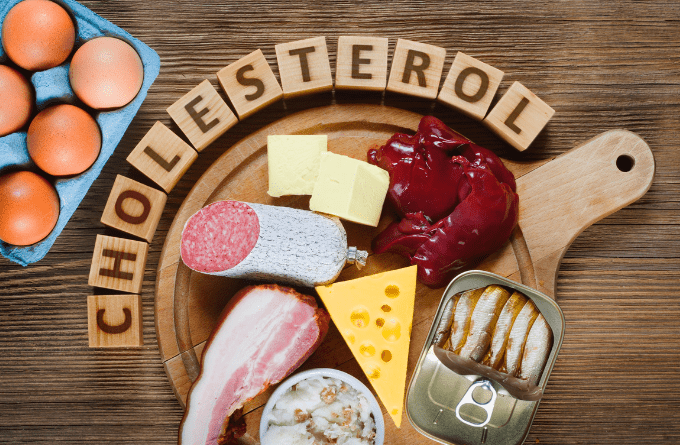
Table of Contents
ToggleLearn effective strategies and benefits of fasting for weight loss in our detailed article. Discover the science behind fasting for weight loss and unlock your body’s potential. Maximize your weight loss journey with our practical tips on fasting for weight loss.
In the relentless pursuit of successful and sustainable weight loss strategies, the practice of intermittent fasting for weight loss has risen to prominence. In this comprehensive guide, we’ll explore the intricate relationship between intermittent fasting and weight loss, revealing the numerous benefits that make it a superior choice in your journey towards achieving your desired physique.
Unraveling Intermittent Fasting: A Key to Weight Loss
Intermittent fasting, a transformative approach to eating, offers far-reaching benefits for those seeking to shed excess pounds. Let’s delve into its various forms and understand how they relate to the overarching goal of weight loss:
1. The 16/8 Method: Fasting for Weight Loss
The 16/8 method, a renowned form of intermittent fasting, involves fasting for 16 hours and consuming all your daily meals within an 8-hour window. Often synonymous with “Fasting for Weight Loss,” this approach typically means skipping breakfast and breaking your fast with lunch.
Expert Insight
Leading nutritionists and health experts are increasingly recognizing the potential of fasting for weight loss. The science behind fasting methods reveals that they can trigger unique metabolic responses, making them valuable tools in achieving and maintaining a healthy weight. The backing of experts in the field reinforces the credibility and efficacy of these fasting approaches.
Additional Insights for the 16/8 Method:
Alignment with Circadian Rhythm: This method harmonizes with the body’s natural circadian rhythm, optimizing digestion and metabolism during the eating window. It capitalizes on the body’s peak activity periods for enhanced nutrient absorption and energy utilization.
Fat Loss and Muscle Preservation: Research indicates that the 16/8 method has the potential to boost fat loss while preserving precious muscle mass. By restricting calorie intake to a specific timeframe, it encourages the body to utilize stored fat for energy, resulting in gradual and sustainable weight loss.
Embracing the 16/8 method for fasting can be a strategic step in your weight loss journey, promoting not only a healthier body composition but also a more balanced and efficient metabolism.
2. The 5:2 Diet: A Weight Loss Fasting Strategy
The 5:2 diet is a well-recognized fasting approach that combines regular eating for five days a week with controlled calorie intake (typically around 500-600 calories) on the remaining two days, often referred to as “Fasting Days.” This method has gained acclaim as a potent tool for achieving weight loss and improving overall health.

Additional Insights for the 5:2 Diet:
Flexibility in Fasting Days: One standout feature of the 5:2 diet is its flexibility. It allows you to choose which two days of the week to designate as fasting days, providing adaptability that can be tailored to your lifestyle and preferences. This flexibility is a significant advantage, making it easier to adhere to the fasting routine.
Balanced Nutrition on Non-Fasting Days: On the five non-fasting days, it’s crucial to maintain a balanced and nutritious diet. This ensures that you receive essential vitamins, minerals, and macronutrients necessary for overall well-being. Opt for whole, unprocessed foods to maximize the benefits of the 5:2 diet.
The 5:2 diet offers a structured approach to intermittent fasting, allowing you to enjoy the health benefits of fasting while accommodating your schedule and dietary preferences. By embracing this method, you can embark on a journey towards weight loss and improved metabolic health, all while maintaining the flexibility needed for a sustainable lifestyle change.
3. The Eat-Stop-Eat Method: Weight Loss Through Fasting
The Eat-Stop-Eat method is a fasting regimen that demands commitment. It involves a full 24-hour fast, typically conducted once or twice a week. This rigorous fasting protocol, closely associated with “Fasting for Weight Loss,” is renowned for its potential to deliver remarkable results.
Additional Insights for the Eat-Stop-Eat Method:
Deep Autophagy Activation: Extended fasting periods, such as those in the Eat-Stop-Eat method, can trigger deep autophagy—the cellular cleanup process. Autophagy is a natural mechanism where the body disposes of damaged cells and components. This process not only contributes to weight loss but also supports overall cellular health and longevity.
Hydration and Flexibility: While fasting for 24 hours, it’s essential to stay well-hydrated. Water, herbal teas, and black coffee (in moderation) can help manage hunger and maintain hydration. Another advantage of the Eat-Stop-Eat method is its flexibility; you can start and end your fast at any time that suits your daily routine.
The Eat-Stop-Eat method is a robust fasting approach that demands dedication but can yield substantial benefits. It’s a powerful tool in the “Fasting for Weight Loss” arsenal, promoting not only fat loss but also cellular rejuvenation and overall well-being. By understanding its principles and adhering to proper hydration, you can harness the potential of this method for your weight loss journey.
Notable Benefits
Fasting for weight loss isn't solely about shedding pounds; it's a holistic approach to well-being. Alongside its weight loss benefits, fasting has been linked to improved insulin sensitivity, reduced inflammation, and enhanced cardiovascular health. This multifaceted impact underscores the idea that fasting is more than just a diet—it's a lifestyle choice that can transform your health on multiple fronts.
4. Alternate-Day Fasting: An Innovative Weight Loss Fasting Plan
Alternate-day fasting, as the name suggests, is a fasting regimen that oscillates between days of regular eating and days of fasting. During fasting days, individuals adopting this approach either consume a significantly reduced number of calories or abstain from food altogether, firmly embracing the core principle of “Fasting for Weight Loss.”
Additional Insights for Alternate-Day Fasting:
Challenge Meets Effectiveness: Alternate-day fasting represents a challenging yet profoundly effective strategy for achieving rapid weight loss. By creating a pattern of intermittent fasting and feeding, this approach compels the body to utilize stored fat as the primary source of energy on fasting days. This metabolic shift can result in notable and sustainable weight reduction.
Modified Start for Novices: Recognizing the difficulty of full-day fasting, especially for newcomers, a prudent approach is to begin with modified alternate-day fasting. In this adaptation, individuals consume a modest number of calories on fasting days, easing into the routine. Over time, as comfort and familiarity grow, the transition to complete fasting days becomes more manageable.
Alternate-day fasting, while presenting its share of challenges, emerges as a powerful tool in the realm of “Fasting for Weight Loss.” Its potential for rapid weight loss and metabolic improvements is backed by scientific research and real-world success stories. By comprehending the intricacies of this approach and considering a gradual introduction, individuals can harness the full potential of alternate-day fasting on their journey to achieving their weight loss goals.

The Science Behind Intermittent Fasting and Weight Loss
Intermittent fasting isn’t merely a trend; it’s firmly grounded in scientific principles. Let’s delve into the biological processes that link intermittent fasting and weight loss:
Autophagy: The Weight Loss Mechanism
Intermittent fasting triggers a process known as autophagy, a cellular cleanup mechanism that plays a pivotal role in overall health and longevity. The connection between “Autophagy” and “Fasting for Weight Loss” is profound, as it aids in the removal of damaged cells and tissues, promoting weight loss and well-being.
Additional Insights on Autophagy:
- Autophagy contributes to cellular rejuvenation, potentially reducing the risk of age-related diseases.
- Intermittent fasting isn’t the only way to induce autophagy; exercise and certain foods can also stimulate this process.
Insulin Sensitivity: A Key to Weight Loss Success
“Insulin Sensitivity” is a term that frequently accompanies discussions on “Fasting for Weight Loss.” Intermittent fasting enhances insulin sensitivity, reducing the risk of type 2 diabetes. Improved insulin sensitivity allows your body to regulate blood sugar levels efficiently, helping you prevent weight gain.
Personalized Approach
One of the most appealing aspects of fasting for weight loss is its adaptability. With various methods to choose from, you can tailor your fasting approach to align with your preferences and lifestyle. Whether you opt for the 16/8 method's daily structure or the 5:2 diet's weekly rhythm, there's a fasting regimen suited to your unique needs.
Additional Insights on Insulin Sensitivity:
- Improved insulin sensitivity can lead to better control of appetite, reducing cravings for sugary and high-calorie foods.
- Combining intermittent fasting with regular exercise further enhances insulin sensitivity.
Hormonal Balance and Weight Loss
Intermittent fasting fosters hormonal balance, including increased production of human growth hormone (HGH). HGH is celebrated for its role in fat loss and muscle preservation, making it a cornerstone in the realm of “Fasting for Weight Loss.”
Additional Insights on Hormonal Balance:
- HGH not only aids in fat loss but also promotes muscle growth and repair, contributing to a more toned physique.
- Hormonal balance achieved through intermittent fasting can lead to improved energy levels and overall well-being.

Unveiling the Weight Loss Advantages
Now, let’s cut to the chase—the primary reason you’re here: weight loss. Intermittent fasting brings forth several compelling advantages that support your journey towards a leaner and healthier you:
1. Caloric Restriction: The Backbone of Weight Loss
By embracing intermittent fasting for weight loss, you naturally reduce your daily caloric intake through controlled eating windows or fasting days, thus establishing a solid foundation for effective weight management.
Additional Insights on Caloric Restriction:
- The caloric deficit achieved through intermittent fasting is a fundamental principle of weight loss.
- Fasting periods can make portion control more manageable, leading to fewer overall calories consumed.
2. Fat Burning: Igniting Weight Loss
During fasting periods, your body taps into stored fat reserves for energy, triggering accelerated fat burning—a phenomenon intricately linked with the concept of “Fasting for Weight Loss.”
Additional Insights on Fat Burning:
- Fat loss during intermittent fasting primarily occurs due to increased lipolysis, the breakdown of fat cells.
- The utilization of fat for energy helps reduce body fat percentage, contributing to a leaner physique.
Holistic Wellness
Fasting for weight loss extends beyond physical changes—it encompasses mental and emotional well-being too. Many individuals who have embraced fasting report heightened mental clarity, improved focus, and a sense of empowerment over their eating habits. This holistic approach to wellness makes fasting a compelling choice for those seeking comprehensive transformation.
3. Metabolism Boost: The Weight Loss Engine
Intermittent fasting revs up your metabolism, ensuring that you burn calories efficiently, even outside of fasting hours—a pivotal element in the equation of “Fasting for Weight Loss.”
Additional Insights on Metabolism Boost:
- A boosted metabolism means your body burns calories at a higher rate, aiding in weight loss even when you’re not fasting.
- Regular exercise, especially strength training, can synergize with intermittent fasting to further elevate your metabolic rate.
4. Enhanced Satiety: Fasting Can Control Overeating
One often overlooked benefit of intermittent fasting is its potential to enhance feelings of satiety. When you’re eating within a limited time window, you’re less likely to overindulge, which can further support your weight loss goals.
Additional Insights on Enhanced Satiety:
- Intermittent fasting can help regulate the hunger hormone ghrelin, reducing cravings between meals.
- Learning to distinguish between true hunger and emotional eating can be a valuable skill on your weight loss journey.

5. Improved Heart Health: Fasting and Cardiovascular Benefits
Intermittent fasting has been associated with improvements in cardiovascular health, including reduced risk factors for heart disease, such as lower blood pressure and improved cholesterol profiles.
Additional Insights on Heart Health:
- Fasting can lead to reductions in blood pressure, reducing the strain on your cardiovascular system.
- Improved cholesterol profiles, especially lower LDL cholesterol levels, are crucial for heart health.
6. Mental Clarity and Focus: The Cognitive Benefits
Fasting periods can lead to increased mental clarity and focus. This cognitive boost can help you make healthier food choices and maintain a positive mindset throughout your weight loss journey.
Additional Insights on Cognitive Benefits:
- Enhanced mental clarity can lead to better decision-making, which is essential for sticking to a weight loss plan.
- Some individuals find fasting periods help them concentrate better, making work and daily activities more productive.
7. Muscle Preservation: Weight Loss Without Sacrificing Muscle
Unlike some diets that lead to muscle loss, intermittent fasting can help preserve lean muscle mass while promoting fat loss. This is particularly beneficial for those seeking a toned and sculpted physique.
Additional Insights on Muscle Preservation:
- To support muscle preservation, prioritize protein intake during eating windows.
- Incorporating resistance training into your fitness routine can help maintain and build lean muscle mass.
Community Support
Joining the fasting community can be a source of motivation and encouragement on your weight loss journey. Engaging with like-minded individuals, sharing experiences, and learning from others' successes can provide the extra boost needed to stay committed to your fasting regimen. Whether through online forums or local groups, the sense of community can make fasting for weight loss an even more rewarding endeavor.
Practical Tips for Maximizing Weight Loss Through Intermittent Fasting
To optimize your weight loss journey with intermittent fasting, consider these practical tips:
Stay Hydrated: Hydration is paramount during fasting periods to curb hunger and maintain overall well-being. Water, herbal teas, and black coffee (in moderation) can help quell appetite.
Nutrient-Dense Eating: When breaking your fast, prioritize nutrient-dense, unprocessed foods to maximize your nutritional intake. Incorporate plenty of vegetables, lean proteins, and healthy fats into your meals.
Consistency is Key: Stay committed to your chosen intermittent fasting method to ensure steady progress towards your weight loss goals. Consistency in fasting windows and eating patterns is essential for results.
Monitoring and Adjustment: Keep a journal or leverage a dedicated weight loss app to track your progress, enabling you to make informed adjustments to your fasting routine as necessary. Pay attention to how your body responds and adapt accordingly.

Conclusion: Fasting for Weight Loss Success
In summary, intermittent fasting stands as a formidable ally in the pursuit of weight loss and enhanced overall health. Its scientifically-backed benefits, entailing caloric restriction, fat burning, metabolic enhancement, and a myriad of additional advantages, position it as a premier choice for individuals seeking to shed unwanted weight.
By integrating intermittent fasting into your lifestyle, you take a significant stride towards a healthier, more slender version of yourself. Embark on your intermittent fasting journey today and witness the remarkable transformation firsthand
Disclaimer: Always consult with a healthcare professional before embarking on any new dietary or fasting regimen, especially if you have underlying health conditions.
Fasting for Weight Loss: FAQs
- What is alternate-day fasting, and how does it contribute to weight loss?
Alternate-day fasting involves alternating between regular eating and fasting days. On fasting days, you either consume limited calories or abstain from food entirely. This approach promotes weight loss by creating a calorie deficit and encouraging the body to use stored fat for energy.
- Can alternate-day fasting be challenging to follow, and how can beginners ease into it?
Yes, alternate-day fasting can be challenging due to the full fasting days. Beginners can start with modified alternate-day fasting, where they consume a reduced number of calories on fasting days before transitioning to full fasting days.
- What is autophagy, and how does it relate to alternate-day fasting?
Autophagy is a cellular cleanup process. Alternate-day fasting, with its extended fasting periods, can stimulate deep autophagy. This process contributes to weight loss and overall cellular health.
- Are there any health risks associated with alternate-day fasting?
While alternate-day fasting can be safe for many people, it may not be suitable for those with certain medical conditions or a history of eating disorders. It’s essential to consult with a healthcare professional before starting any fasting regimen.
- How does the 5:2 diet work, and what are its advantages for weight loss?
The 5:2 diet involves regular eating for five days a week and restricted calorie intake (usually 500-600 calories) on the remaining two days. It promotes weight loss by creating a calorie deficit and is known for its flexibility.
- What is the significance of flexibility in the 5:2 diet?
The 5:2 diet offers flexibility in choosing fasting days, making it adaptable to individual schedules and preferences. This flexibility enhances adherence to the fasting routine.
- How can one ensure balanced nutrition on non-fasting days while following the 5:2 diet?
On non-fasting days, it’s crucial to maintain a balanced diet rich in essential nutrients. Prioritize whole, unprocessed foods to meet your nutritional needs.
- What is the 16/8 method, and how does it aid in weight loss?
The 16/8 method involves fasting for 16 hours and confining eating to an 8-hour window. It supports weight loss by creating a restricted eating window, encouraging calorie reduction, and aligning with the body’s circadian rhythm.
- How does the 16/8 method align with the body’s natural circadian rhythm?
The 16/8 method capitalizes on the body’s natural circadian rhythm, optimizing digestion and metabolism during the eating window. This alignment enhances nutrient absorption and energy utilization.
- Can the 16/8 method help preserve muscle mass during weight loss?
Yes, studies suggest that the 16/8 method may aid in fat loss while preserving muscle mass. This makes it an attractive option for those seeking to achieve a leaner physique.






